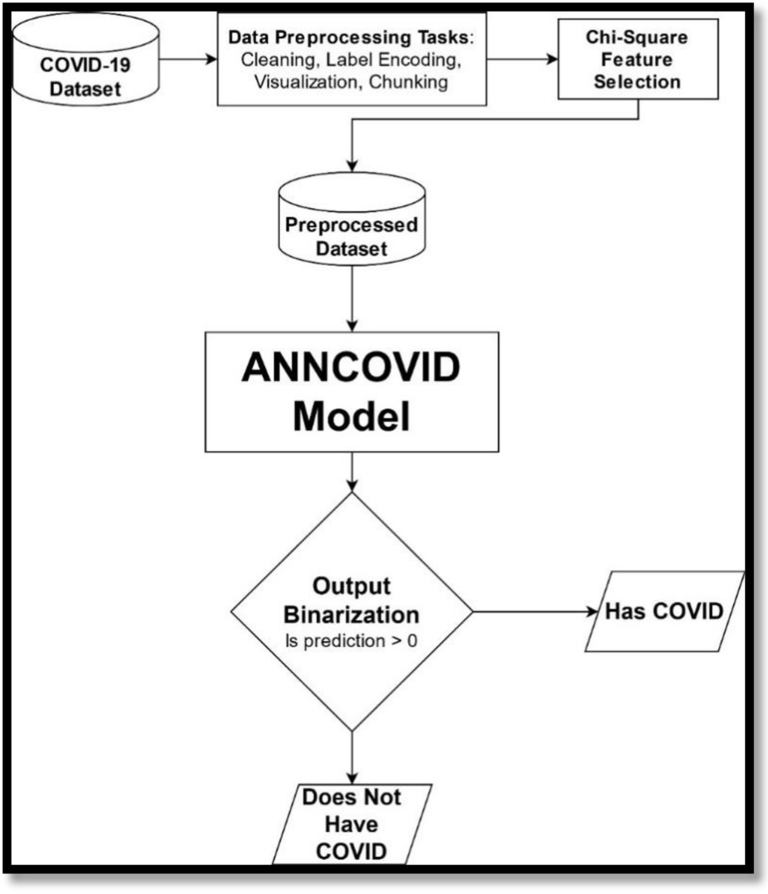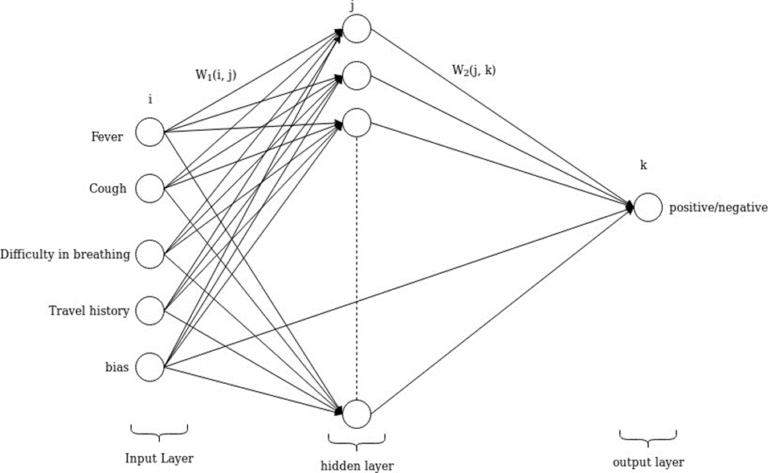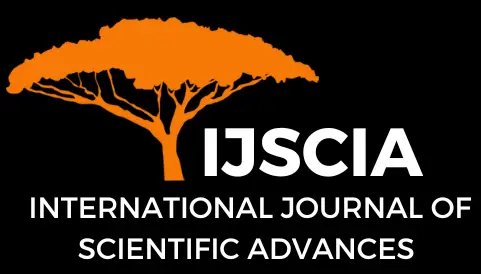Development of an Artificial Neural Network Model for Detection of COVID-19
Benjamin Aribisala1,2*, Olumuyiwa Odusanya3, Olusola Olabanjo1, Elias Wahab4, Olayinka Atilola5, Abdulrasaq Saheed1
Abstract
Background: The insurgence and resurgence of waves of the COVID-19 virus pandemic, aside its recorded mortality, has posed a lot of burden on the global health, social and economic systems. Its burden is worsened by the difficulty in its diagnosis due to the level of confusability in its symptoms which overlap with other diseases. Aim: The aim of this project was to develop an Artificial Neural Network (ANN) model for diagnosis of COVID-19 based on data acquired from COVID-19 patients. Materials and Method: A COVID-19 dataset was obtained from an online repository containing a total of 5434, with 4383 positive (80%) and 1051 negative cases as confirmed by Polymerase Chain Reaction (PCR) based test. The dataset was split into training and testing in the ratio 80:20 respectively. The ANN Covid-19 model (ANNCOVID) model was built on the training dataset and tested on the testing dataset. Model performance was assessed using sensitivity analysis and accuracy. Results: Twenty features were identified from the dataset. The 20 features were ranked to identify their importance and diagnostic potentials. Ranking was done using Mutual Information Gain and three classification experiments were carried out after feature ranking: using 11, 14 and all 20 features as ranked by their corresponding P-values. The full-feature experiment yielded 98.44% accuracy, 99.31% sensitivity and 94.88% specificity. The 14-feature experiments gave 97.88% accuracy, 98.72% sensitivity and 94.76% specificity. The 11-feature experiment yielded accuracy, sensitivity and specificity of 97.33%, 97.75% and 95.50% respectively. This result shows that 20-feature experiment gave the highest accuracy and the highest sensitivity but the 11-feature experiment gave the highest specificity. Conclusion: Results show that the ANNCOVID model has a great predictive potential. Results also show that the use of all features offer higher predictive potential than just using a few. These show that the proposed model can help to reduce PCR related cost as patients can be diagnosed easily and accurately by using the proposed ANNCOVID model.
Keywords
artificial neural; COVID-19; ANNCOVID model
Cite This Article
Aribisala, B., Odusanya, O., Olabanjo, O., Wahab, E., Atilola, O., Saheed, A. (2022). Development of an Artificial Neural Network Model for Detection of COVID-19. International Journal of Scientific Advances (IJSCIA), Volume 3| Issue 3: May-Jun 2022, Pages 377-385, URL: https://www.ijscia.com/wp-content/uploads/2022/06/Volume3-Issue3-May-Jun-No.272-377-385.pdf
Volume 3 | Issue 3: May-Jun 2022






